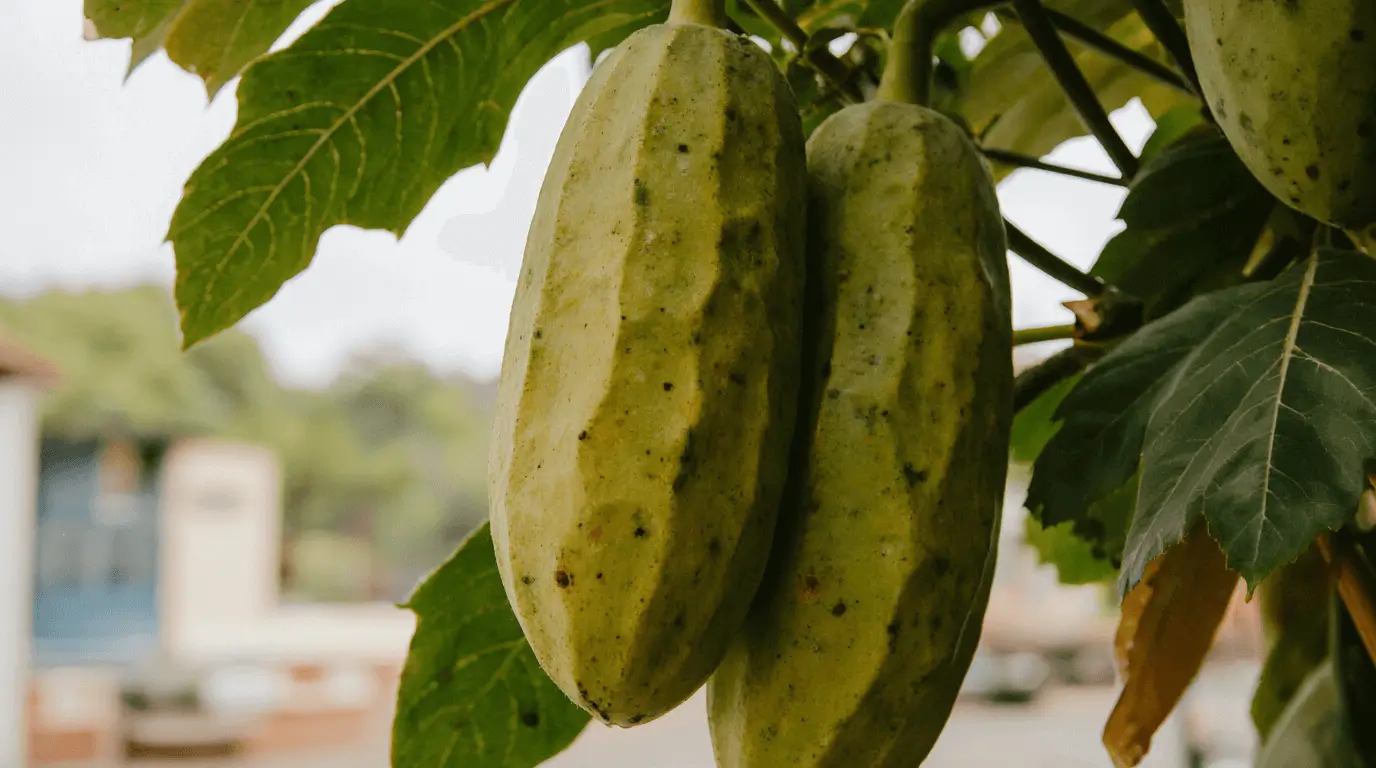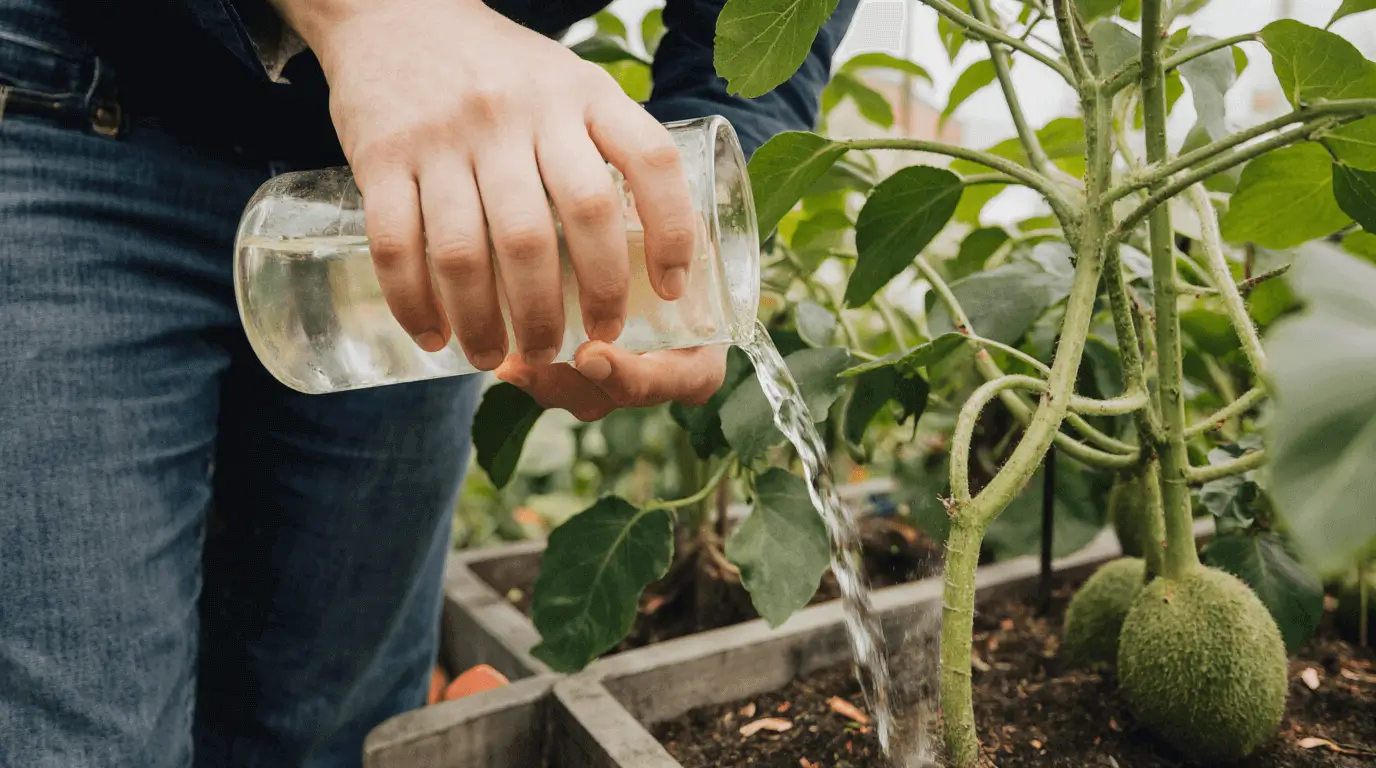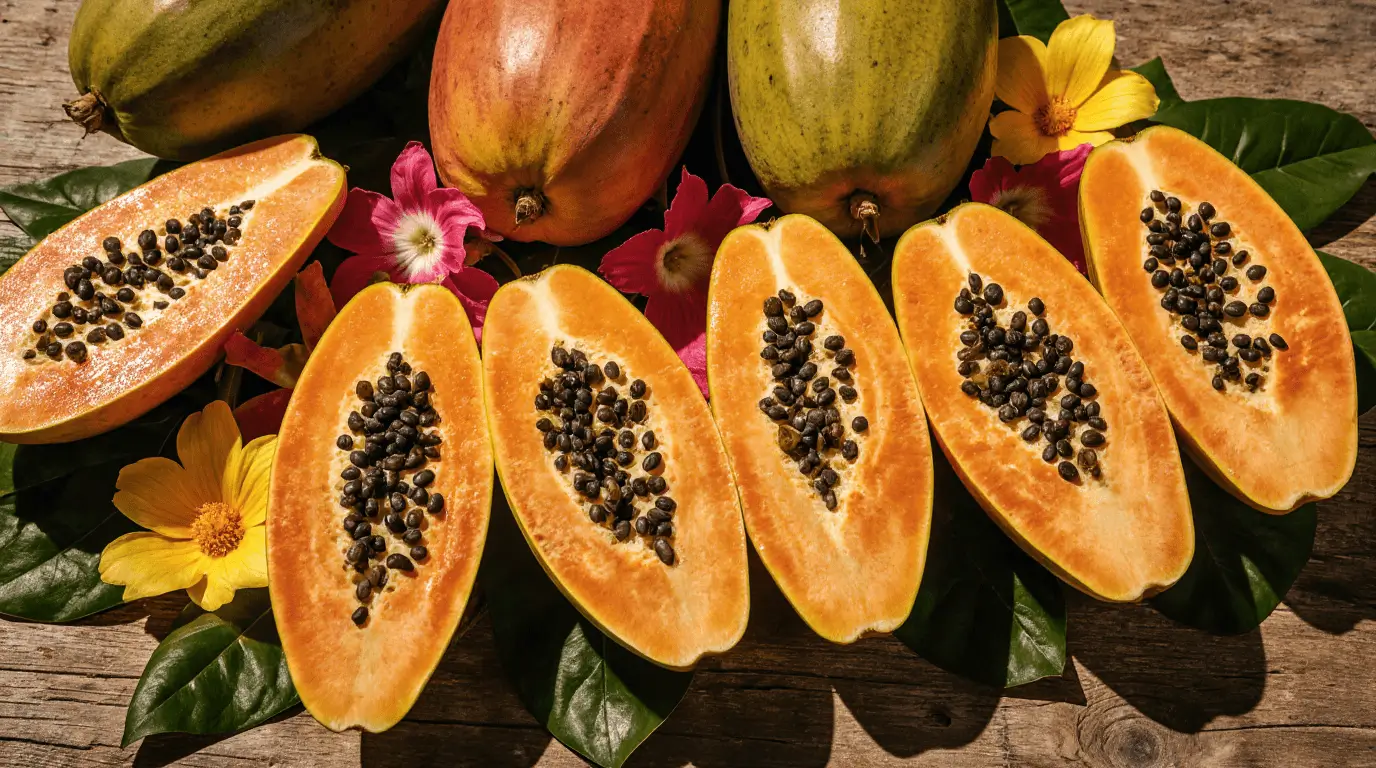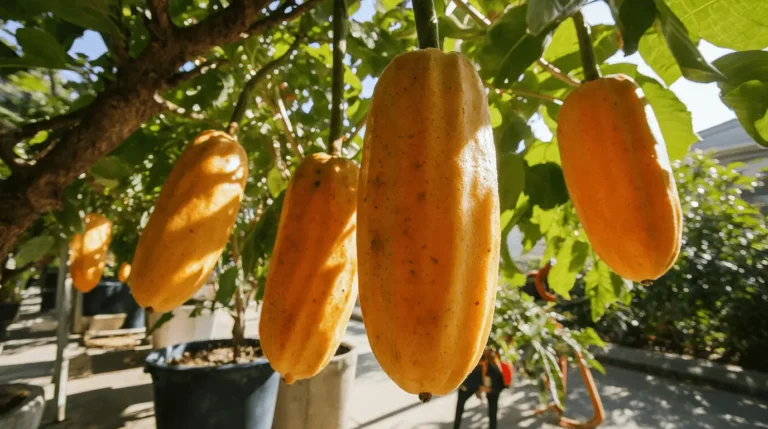When I first started growing papaya in my home garden, I was amazed at how many varieties exist — from Hawaiian to Mexican and Indian types. Each papaya tree offers its own tropical flavor, sweetness, and compact size, making the decision exciting yet a little challenging. I quickly learned that understanding your climate, available space, and taste preferences helps narrow down the best types of papaya for your specific needs. For smaller green spaces, Hawaiian varieties with compact growth and a high yield are often the favorite choice, especially if your intended use is for daily fruit consumption. Their characteristics make them ideal for beginners and experienced gardeners alike, offering great satisfaction and joy in every harvest.
Through my gardening journey, I’ve realized that every gardening experience teaches something new. The climate conditions, soil conditions, and amount of space available all affect the suitability of the plant. While Mexican types thrive in wider areas, Indian varieties adapt well to warmer climates, making them reliable solutions for diverse regions. The secret lies in making informed choices that match your environment and level of care. No matter what you choose, growing papayas fills your journey with love, patience, and a sense of harmony with nature — the true reward of gardening.
Introduction
In the vibrant world of gardening, few fruits bring such tropical allure and beauty as the papaya. Over the years, I’ve admired how its diverse varieties, like the Hawaiian Solo and Mexican Maradol, have charmed both home gardeners and commercial growers alike. Each variety has its own characteristics, flavors, and cultivation requirements, making the decision of what to grow both exciting and thoughtful. Through my own gardening journey, I’ve learned that understanding these classifications, along with the pros and cons of popular varieties, helps in selecting the perfect papaya for one’s gardening needs.

Every season, the options for growing papayas feel endless, but with a bit of guidance, you can enjoy a bountiful harvest and elevate your garden’s aesthetic. These tropical gems add joy, beauty, and a sense of imagination to everyday life, transforming even small spaces into vibrant green retreats. Whether your goal is flavor, visual appeal, or both, making the right choice leads to a successful gardening journey that connects you to nature and the wider world of tropical fruits.
Explore Papaya Varieties: Characteristics and Classifications
When growing papayas, I’ve found that each variety—whether Hawaiian, Mexican, or Indian—has its own unique traits that appeal to different personal tastes and gardening requirements. The Hawaiian types are often seen as the best variety of papaya, known for their sweet, vibrant orange flesh and minimal seed content, which make them perfect for home gardeners. Their compact growth habit allows them to thrive in limited spaces, yet they still produce an impressive yield, often reaching 20-30 tonnes per hectare under optimal conditions. From my experience, understanding these differences helps make each planting season more rewarding and efficient.
Mexican Papayas
From my experience growing Mexican varieties, these fruits truly stand out for their larger size and rich musky flavor that makes them unique among papayas. They can reach up to 10 pounds, which is impressive for home gardeners and ideal for commercial production. What I love most is their strong resilience—they adapt well to various climates, ensuring consistent substantial yields even in changing conditions. Producing around 15 tonnes per hectare, they’re an excellent choice for anyone aiming to boost their garden’s output, with plants that are hardy and always thriving season after season.
Indian Papayas
From my experience growing Indian fruits, I’ve found that varieties like Pusa Delicious and Red Lady truly stand out for their unique flavors, rich textures, and delightful sweetness. These papayas thrive in diverse climates when given the right attention and specific growing conditions, making them the best variety of papaya for many home gardens. They blend beautifully into any tropical produce assortment, adding both taste and visual appeal. When selecting a type, consider local climate factors, available space, and your individual taste preferences—each has its own unique growing requirements and flavor profiles. Making informed choices leads to successful cultivation and an enjoyable gardening experience.
Evaluate the Pros and Cons of Popular Papaya Varieties
- The Hawaiian Solo stands out among papaya varieties for its sweet flavor, compact growth, and early fruiting, making it perfect for home gardeners seeking quick yields. Though it earns premium prices in the US market due to limited supplies and higher shipping costs, it’s sensitive to cold temperatures and requires well-drained soil, especially in cooler climates.
- The Mexican Maradol is known for its large fruits and suitability for commercial production because of its strong disease resistance and robust nature. It produces substantial yields and is a cost-effective option at around $0.55/lb, but its musky flavor and need for space can be limiting for limited garden areas.
- The Red Lady offers a high yield, sweet taste, and great adaptability, thriving in smaller garden spaces with consistent watering. However, strong winds and weather challenges in some environments can affect its performance.
- Pusa Delicious provides exceptional fruit quality, resilience, and tolerance to various climates, ideal for maintaining plant health. Yet, its specific soil conditions can limit success in certain gardening setups.
- Through careful evaluation and gaining insights into your personal preferences and environmental conditions, you can ensure a fruitful papaya-growing experience. Each fruit, including its seeds and leaves, contributes to traditional medicine, showcasing the versatile species and the joy of a fulfilling gardening journey that brings plants, joy, nourishment, and life to your space.
Determine the Best Types of Papaya for Your Gardening Needs
Finding the best types of papaya for your garden depends on your climate, space, and taste preference. Through my own experience, I’ve learned that matching the right type to your gardening methods makes all the difference in achieving a fruitful gardening experience.
- In warmer areas like USDA Zones 9B-11, Hawaiian and Mexican types thrive beautifully.
- For a cooler region, go for disease-resistant varieties such as Pusa Delicious.
- If you have a small garden area or limited space, dwarf varieties like Pusa Nanha, TR Hovey, or dwarf-like papaya work best for containers and small gardens.

- Sweet lovers can try Red Lady or Hawaiian Solo for sweeter fruits, while those who prefer a robust flavor can pick Mexican Maradol.

- For commercial production, larger varieties give higher yield and are great for scaling your cultivation goals.
- Maintain consistent watering about once or twice a week for healthy growth and long-term manageability.
When I first started home cultivation, balancing environmental conditions with cultivation goals felt challenging. But understanding established grades, good arrival guidelines, and adapting care routines for the U.S. and Canada conditions helped me build a system based on commitment, quality, and customer service. Each choice — from soil to variety — adds joy and balance to your tropical gardening journey.

Read Also: Tropical Fruit Trees: Grow Exotic Paradise at Home (Grow Guide)
Conclusion
Growing papayas has been one of the most rewarding experiences in my gardening journey. From Hawaiian Solo’s sweet flavor to the Mexican Maradol’s bold taste and the Indian Red Lady’s versatility, each type of papaya offers something unique for every gardener. Whether you’re looking for compact trees for small spaces or large-yielding varieties for commercial growth, understanding your climate, soil, and personal taste makes all the difference. By choosing the right type and nurturing it with consistent care, you’ll enjoy not only vibrant, tropical fruit but also the satisfaction of cultivating life in your own garden. Growing papayas truly connects you with nature’s abundance—offering beauty, nourishment, and endless joy season after season.

FAQs
- Which type of papaya is the sweetest?
The Hawaiian Solo and Red Lady varieties are known for their exceptional sweetness and smooth texture, making them ideal for fresh eating and desserts. - Which papaya variety grows best in small gardens or containers?
If space is limited, choose Pusa Nanha, TR Hovey, or other dwarf varieties. They grow compactly yet still produce delicious fruits in containers or small yards. - What’s the main difference between Hawaiian and Mexican papayas?
Hawaiian papayas are smaller, sweeter, and more aromatic, while Mexican papayas are larger, more musky, and better suited for large gardens or commercial production. - Are Indian papaya varieties good for all climates?
Yes, Indian types like Red Lady and Pusa Delicious adapt well to warm, tropical, and semi-tropical climates, offering both resilience and high yields when properly cared for. - How do I choose the best papaya variety for my garden?
Consider your climate zone, space, and taste preference. For warm regions, go for Hawaiian or Mexican types. In cooler or variable climates, select disease-resistant varieties like Pusa Delicious. - How often should papaya plants be watered?
Water them once or twice a week, ensuring the soil stays moist but not waterlogged. Proper watering keeps plants healthy and encourages consistent fruiting.





[…] Read Also: Determine the Best Papaya Variety for Your Gardening Needs — Choose Smart for Your Climate […]
[…] Read Also: Determine the Best Papaya Variety for Your Gardening Needs […]